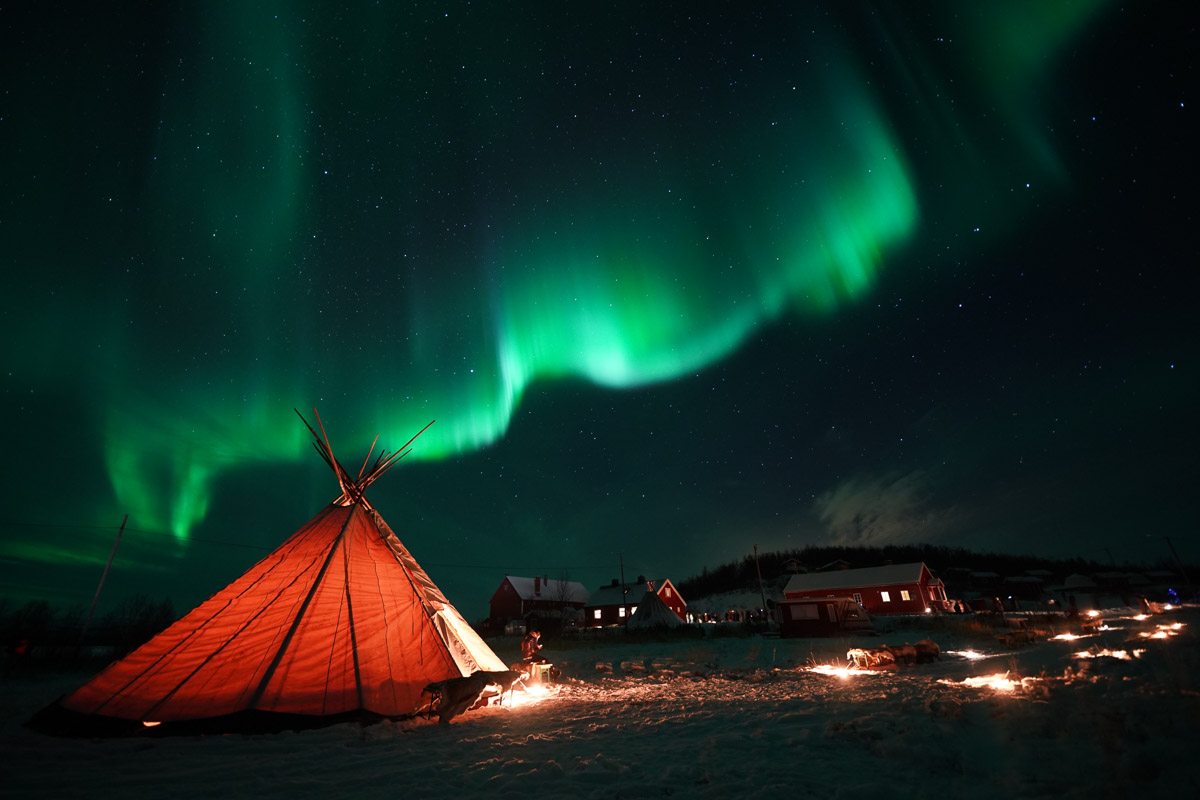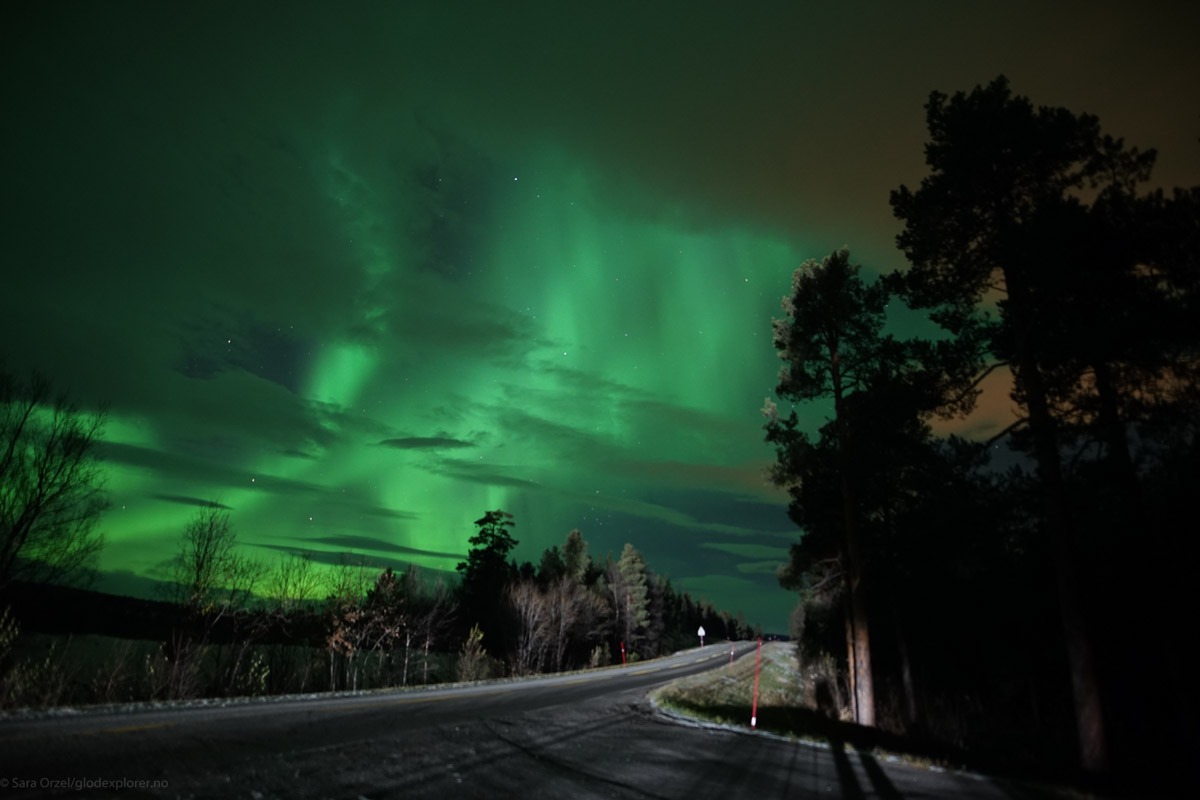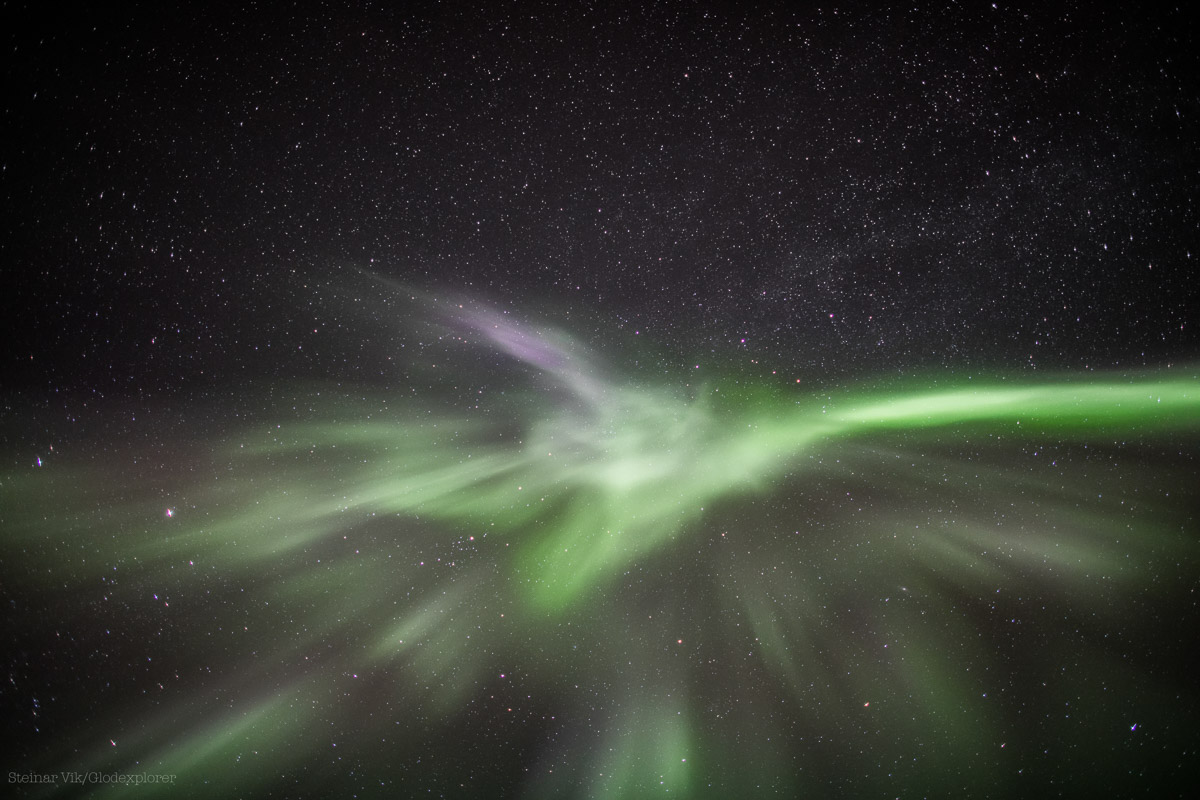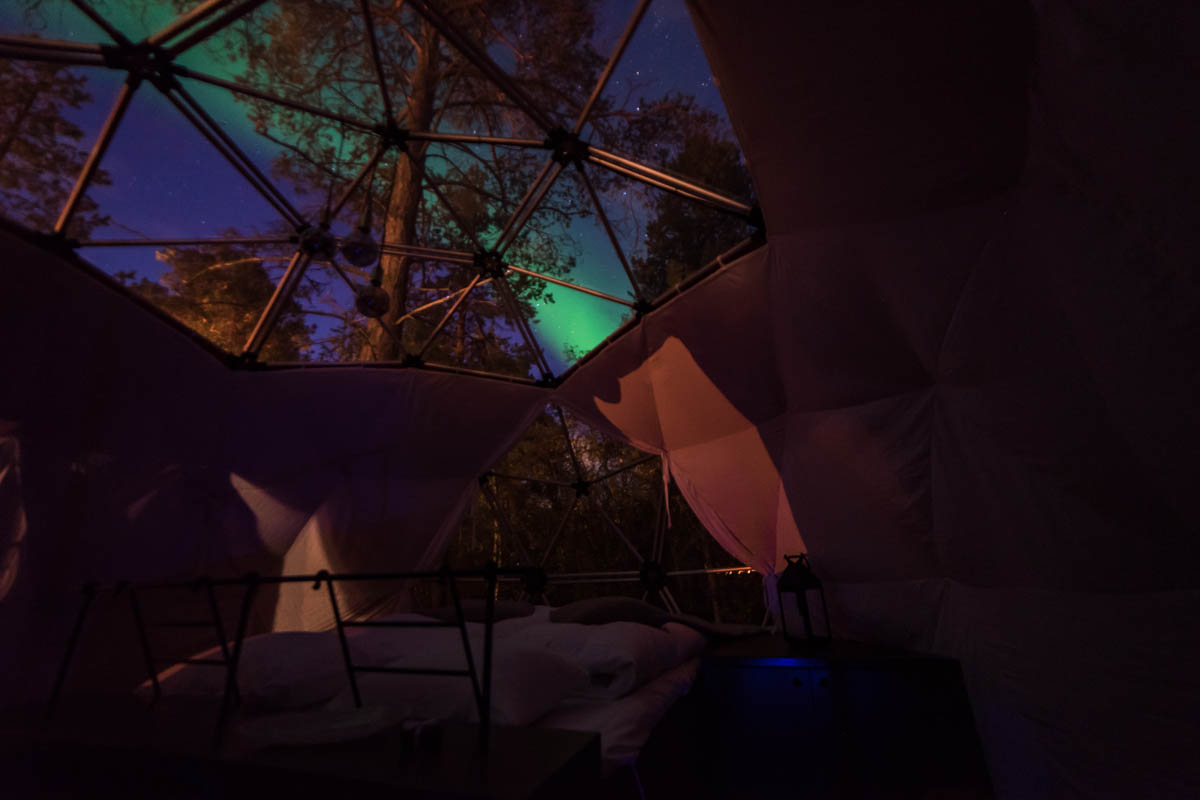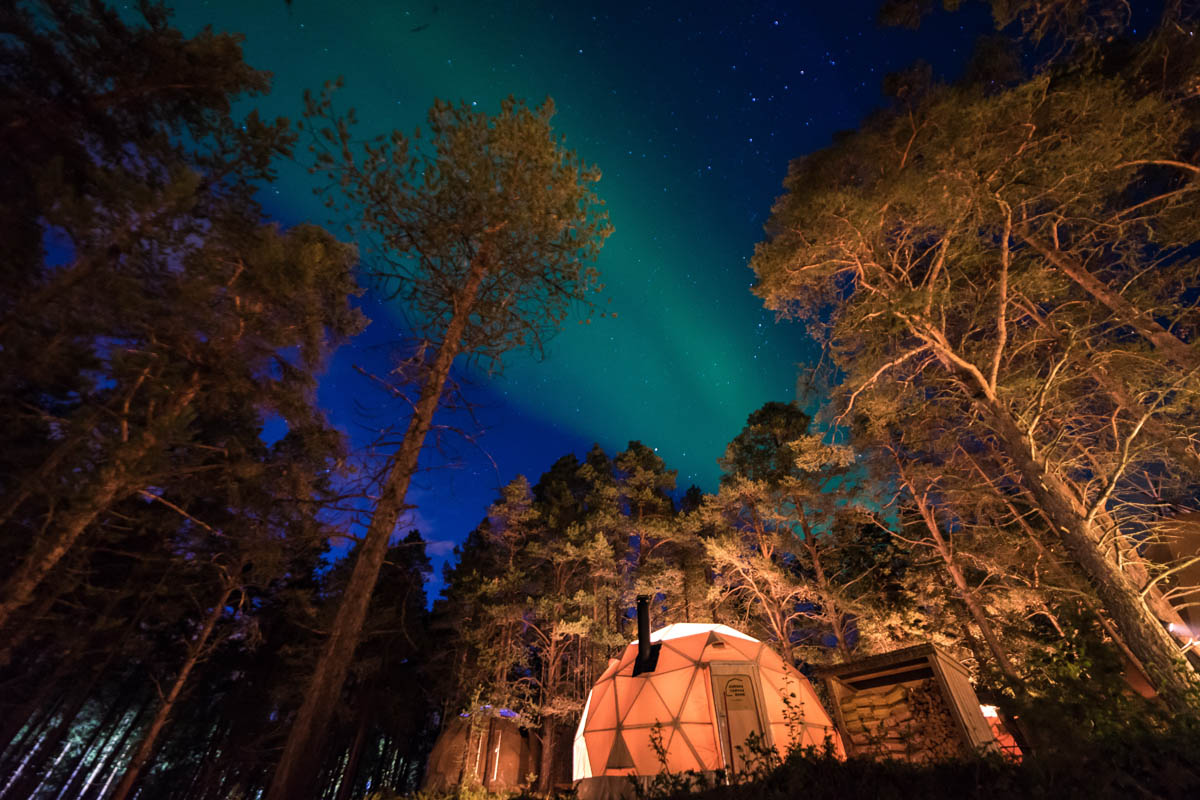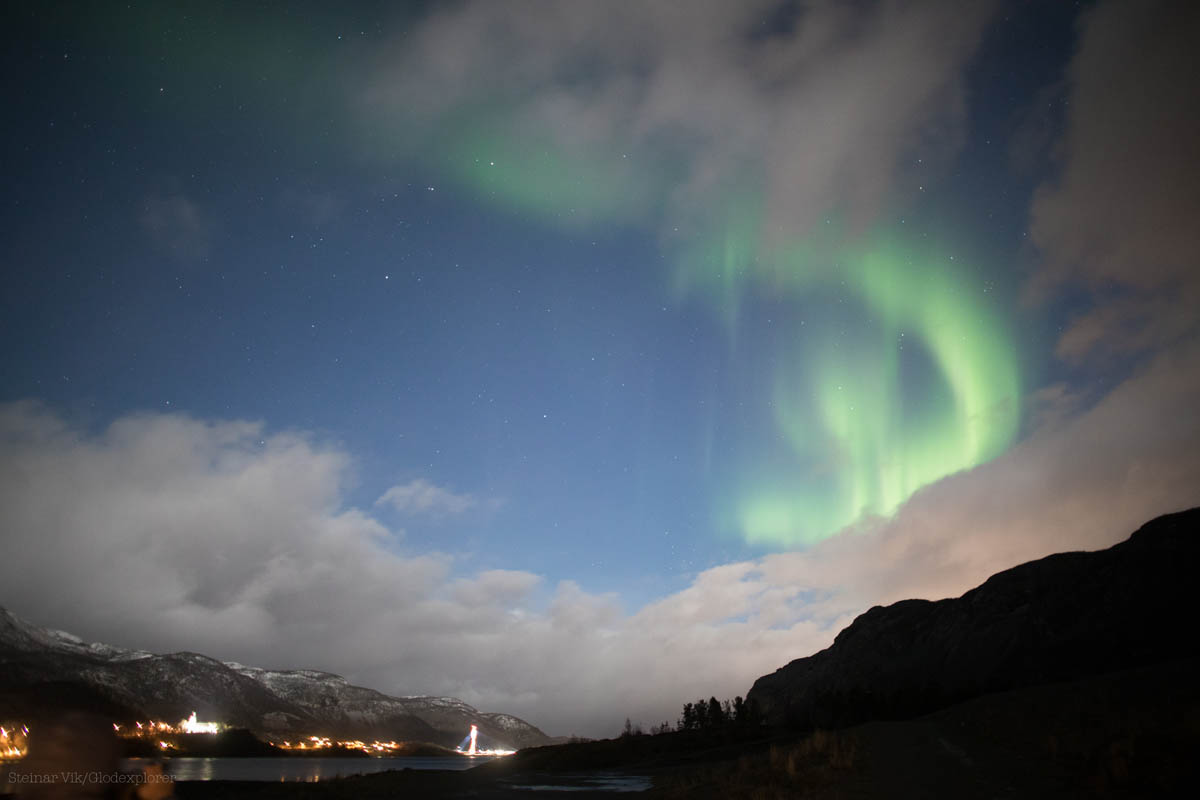The town of Alta lives up to its reputation of being the place where visitors have a high probability of seeing the Northern Lights, and the little company Glød will take you where the Northern Lights are. Or at least to where you have the greatest chance of seeing them: out along the fjords, westwards towards the glacier or, best of all, right up onto the Finnmarksvidda plateau.
“The road forms as you walk” as the Norwegian saying goes. That is at least true for Trygve Nygård of the little tourism experiences company, GLØD, in Alta. Visitors on the hunt for the Northern Lights have no idea where the journey will take them when it begins. The wind direction and weather forecast determine the likelihood of the Northern Lights being visible, and the visitors are involved in deciding whether or not to try for a sighting. This means they have ownership of the decision, and a greater understanding if the trip is unsuccessful. And the experience is even more fantastic if the Northern Lights appear.
The climate in Alta is perfect for an aurora hunt
Alta enjoys a good, dry and stable climate, with many nights with clear skies. The average annual precipitation is like that of a steppe zone, at 410mm (16. 14 inches) .no t surprising, then, that Kristian Birkeland (who appears on the Norwegian 200-kroner banknote) chose Alta when he started the modern research into the Northern Lights phenomenon from Haldetoppen in Alta in 1899. For the essential factor for the Northern Lights to be visible is clear skies, and above the clouds they appear practically every night in Northern Norway.
With bad weather, the tour moves out onto the Finnmark plateau
“We can see the Northern Lights most frequently well into the Finnmarksvidda plateau. The bad weather often stops at around Alta, and there is clearer weather further inland. When the onshore wind blows, however, sightings are better along the coast. Then we drive out along the Altafjord or towards Øksfjord. Last winter we had a success rate for sightings of 83%, while we managed 70% the previous winter. Maybe we’ve become better at hunting, but at the same time there is going to be a higher frequency of Northern Lights until they peak in 2013,” says Trygve.
You’re never guaranteed to see the Northern Lights
”We are very straight with visitors and tell them there is no certainty the Northern Lights will appear. Once we had a group of Danes who were hell-bent on seeing the Northern Lights, and the meteorologist in Tromsø announced that there was a small possibility in Hammerfest. So we drove the 210-225 miles to Hammerfest, saw one star and no Northern Lights, and then drove back again. The mood among the group wasn’t exactly great, so it was important to raise their spirits with a little coffee, biscuits and perhaps a bit of dried reindeer heart. It’s also happened that the Northern Lights have peeped through the clouds after the trip was really over at midnight, and then we drove to the hotel and fetched them again,” laughs Trygve.
Sometimes Lady Aurora shows up just when you need her
”Another time I had a group of strong-arm debt collectors. They were all over 6ft tall, lifted 600lb in bench press and had enormous tattoos. When we got onto the plateau, there were magnificent Northern Lights across the sky, and I was hugely relieved! I have often experienced that people will book a new trip, both when they see the Northern Lights and even when they don’t,” says Trygve. “When they have seen them, they want more, and want to photograph them from new angles. ”
Good clothing is essential when hunting the aurora in Finnmark
In mid-winter up on the Finnmarksvidda plateau the temperature on the dashboard shows a bone-chilling -25°C (-13°F), and calls forth reactions from the visitors. It is not a problem, however, most are warmly dressed, and Trygve lends thermal clothing and socks to those without sufficient cold-weather clothing. Hot coffee and tea also help, and one can always go inside and get warmed up. The cold on the plateau is also a dry cold.
A camera with manual settings is a must
Trygve is an experienced photographer and has taken many pictures. He can therefore provide useful help in adjusting the camera. “I recommend using a digital mirror reflex camera with manual controls ‒ a compact camera doesn’t have the same options,” explains Trygve. Trygve also takes photographs with his own camera, and it is possible to buy pictures from him at a good price. ”They get posted at once on Facebook,” he laughs. The experience is nevertheless greater if one takes the photographs oneself, and after a trip like this people have become experts in night photography.

Join Glød hunting the Northern Lights
They have one mission, to find the Northern Lights
